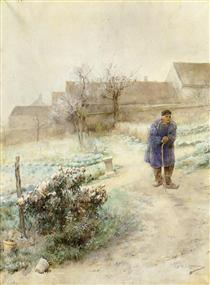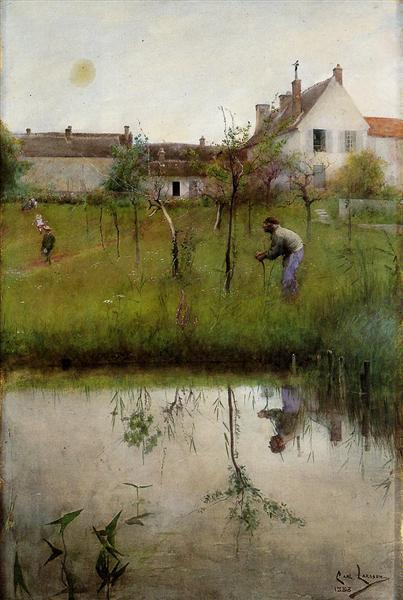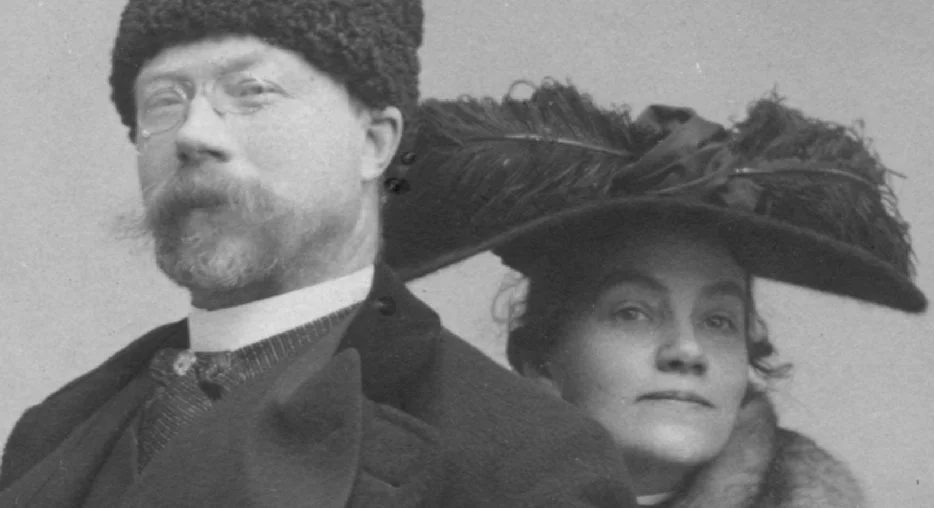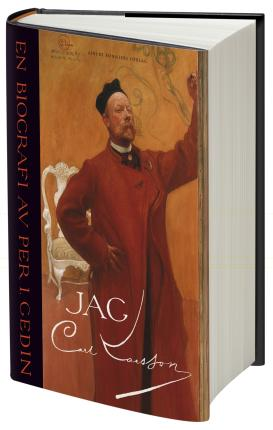My blog today focuses on the lives and works of a very talented nineteenth century Swedish couple, Carl and Karin Larsson, a couple whose upbringing was so different.

Carl Olof Larsson was born on May 28th 1853 in the Stockholm town of Gamla stan, which literally translates to “old town” but is now known as Staden mellan broarna (“The Town between the Bridges”) as its geographical position is an island, Stadtsholman, which is dissected by two bridges, the Centralbron and, the Skeppsbron. Carl was brought up in an impoverished household and by all accounts, he led a wretched childhood. More can be gleaned of Carl’s terrible early existence when you read Renate Puvogel’s 1994 biography of Larsson in which she talks about his and his mother’s terrible existence at the hands of Carl’s father:
“…His mother was thrown out of the house, together with Carl and his brother Johan; after enduring a series of temporary dwellings, the family moved into Grev Magnigränd No. 7 (later No. 5) in what was then Ladugårdsplan, present-day Östermalm…”.
Carl Larsson’s father had changed jobs many times. He worked as a casual labourer, sailed as a stoker on a ship, and during this time he also managed to lose the lease to a nearby mill. Ironically, years later, he was employed at that same mill as a lowly grain carrier. Carl Larsson, in his autobiography. Jag, portrayed his father as a loveless man lacking self-control; he said that he drank, ranted and raved, and incurred the lifelong hatred of his son after once declaring to Carl that he cursed the day that his son was born. In contrast, Carl’s mother worked long hours as a laundress to provide for her family.
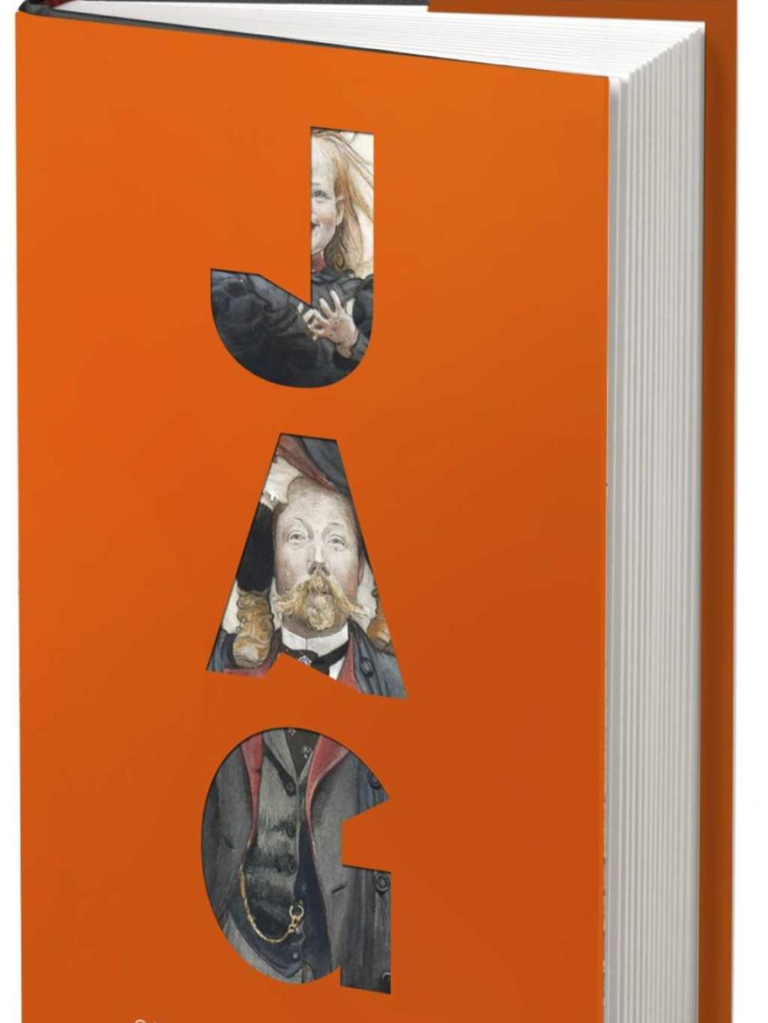
In his autobiography, Jag, Larsson wrote about his childhood home in Stockholm’s Old Town . Misery was his overwhelming memory of those early years. He talked about dirt and rats swarming the spaces between mattresses thrown to the floor. Such conditions were conducive to the outbreak of cholera, which broke out in Stockholm in 1866. In his world as a child, the word ‘home’ did not have positive connotations, it meant something rather like a camp where one could not dream of privacy or comfort. Carl related how he often went hungry, and how he was physically drained by having to help with heavy chores such as carrying water, chopping wood and shoveling snow.
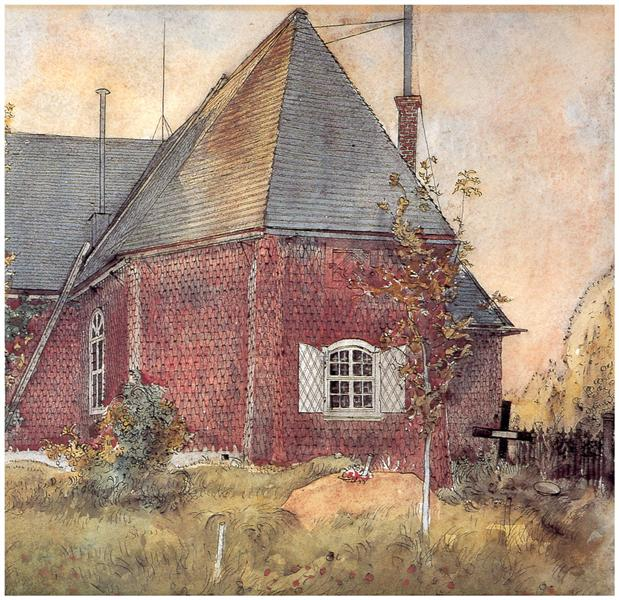
His salvation came when he was thirteen-years-old and his teacher at the school for the poor was impressed by Carl’s drawing skills, and advised his mother to have their son apply to the preparatory school of the Royal Swedish Academy of Arts. He was accepted but the first years there were a trial for the young boy who was both withdrawn, shy and suffered from an inferiority complex. In 1869, at the age of sixteen, he moved up to the lowest department of the Art Academy itself. There Larsson personality changed. He became more confident and more outgoing and even became a central figure in student life.
In his early days at the Academy Carl earned his first medal in nude drawing. He also worked as a caricaturist for the humorous paper Kasper and as a graphic artist for the newspaper Ny Illustrerad Tidning and from the earnings he made from this work he was able to help his parents financially for many years. Once he had graduated from the Academy, Carl travelled to Paris for he believed it was there that he could improve his academic painting. Carl went back and forth between Paris and Sweden for many years.
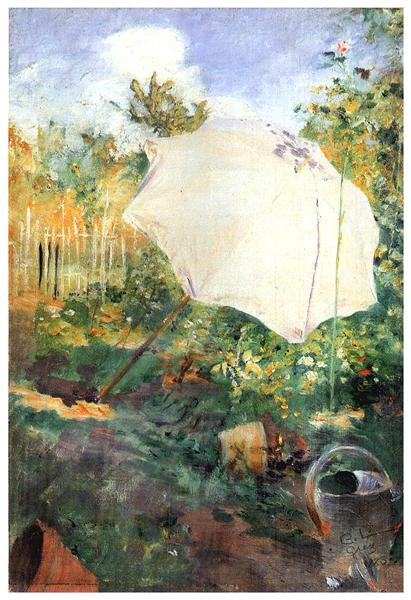
He remained in Paris for many years working hard but with little success. Larsson was reluctant to align himself with the Impressionist movement and like many of his Swedish compatriots, who were living in the French capital, he shunned this radical artistic movement of change which was all the rage in Paris. As well as receiving some commissions Larsson illustrated books, among which were Hans Christian Andersen’s fairy tales and August Strindberg’s, Svenska folket and helg och söcken [The Swedish People]). It was never enough to make him financially sound. Carl continued to work tirelessly whilst in Paris but to no great avail and he was often short of money.
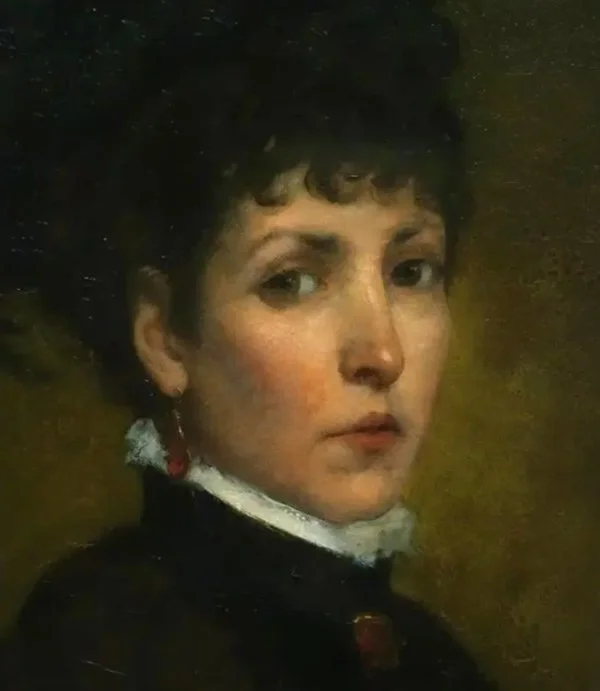
Carl had many romantic trysts during this period and for a time he lived with Wilhelmina Holmgren whose portrait he painted in 1876. Sadly she died giving birth to their second child, and soon after, both their children had passed. The situation at the time had a traumatic effect on Larsson who sank into deep depression and for a time he contemplated suicide.
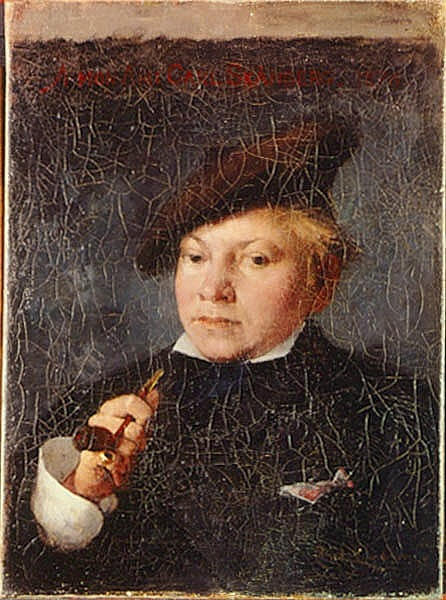
In 1878 Carl Larsson completed a portrait of Carl Skånberg, a fellow Academy student who had also moved to Paris. Carl submitted the portrait to the Salon that year but unfortunately it was hung so high up on the wall of the Salon that it was hard to see ! During his period in Paris he spent two summers in Barbizon with the en plein air painters but in 1882 he moved to another artist colony, Grez-sur-Loing.
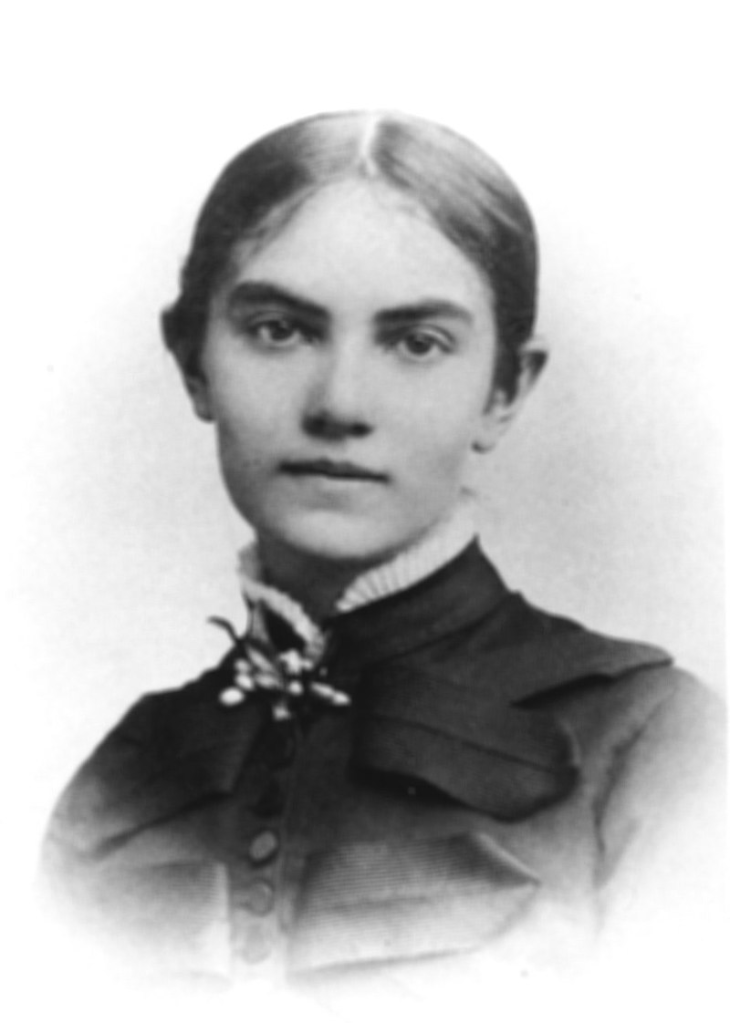
On October 3rd 1859, when Carl was just a six year-old child, a hundred miles to the west of Stockholm, the birthplace of Carl Larsson, a girl, Karin, was born, the daughter of Adolf Bergöö, who was a successful businessman and his wife, Hilda Sahlqvist. Although born in Örebro Karin grew up in Hallsberg, a town to the south, where her father ran a trading house and he soon became one of the leading citizens of the town. Unlike Carl’s upbringing Karin was brought up in a family which had no financial problems and she had a happy childhood. At the age of twelve, Karin was sent to Stockholm where she divided her time between the French School and courses at slöjdskolan (a craft school). Following a few years of study, she transferred to the Royal Swedish Academy of Fine Arts in 1877. The Academy had only been open to female students since 1864.
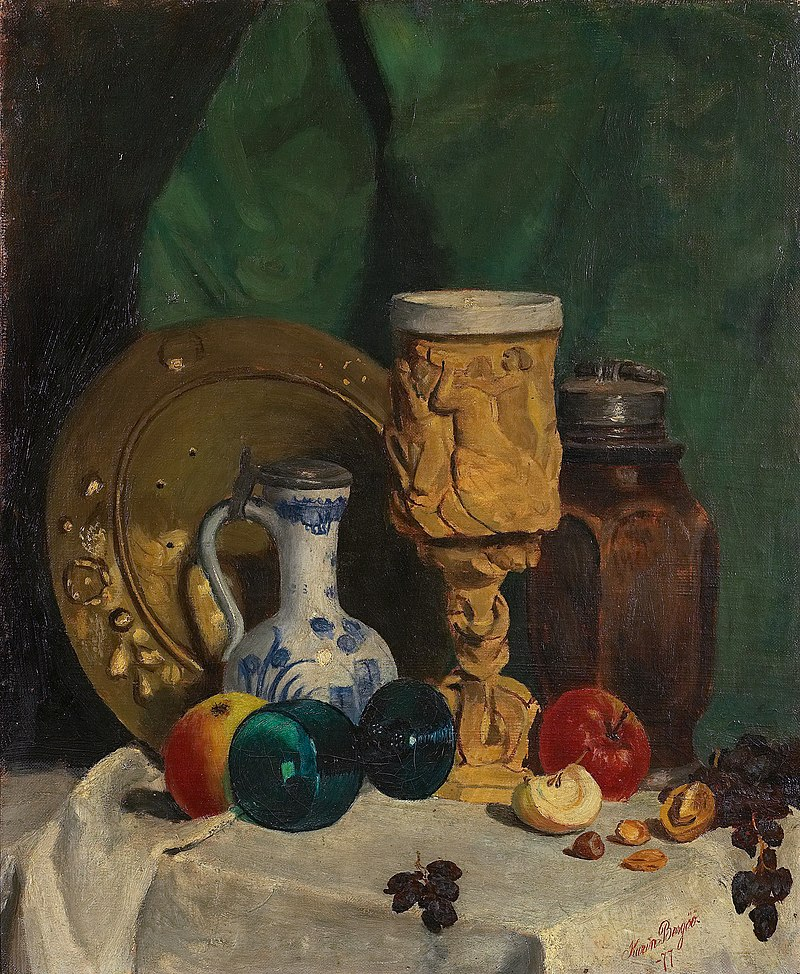
Karin Larsson started at the Fruntimmers (womens) department, where the teaching was completely separate from that of her male students. Although a woman training to be an artist was possible, females wanting to paint were looked upon as just wanting to have a skill that would help in their search for a husband.
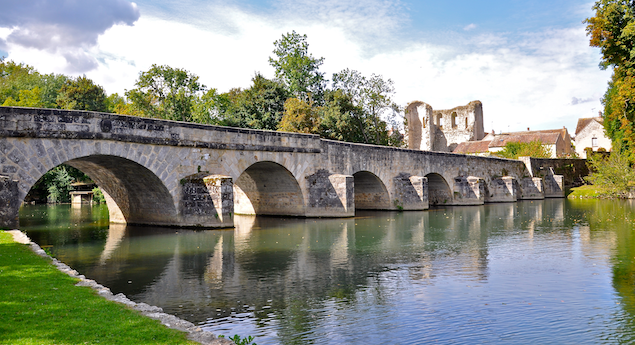
In 1882, twenty-three-year-old Karin Larsson, along with some of her fellow artist students, including the talented Impressionist, Julia Beck, travelled to Paris and enrolled in the Académie Colarossi. During the summer break, like many other Swedish painters and writers, they travelled to the artist colony Grez-sur-Loing, seventy kilometres south of Paris. The first overseas artists to arrive at the small village were the Americans, English, Scots and Irish. Then, during the 1880s most of the artists were Scandinavians and just before the turn of the century the Japanese arrived to found the Japanese impressionist movement at Grez. The central part of the village is criss-crossed by meandering streets and much of the town looks the same as it did over 100 years ago. The village is off the beaten track, built on the river that runs leisurely underneath the imposing leafy trees. Grez-sur-Loing is no longer just a farming community, it is a small village which has the unmistakable charm of the late 18th and early 19th century French countryside. It was here that she met Carl Larsson, who was something of a “leader” of the artistic fraternity. Life that summer in Grez for Karin was an artistic highlight and she and Carl Larsson worked side by side, often depicting similar motifs.
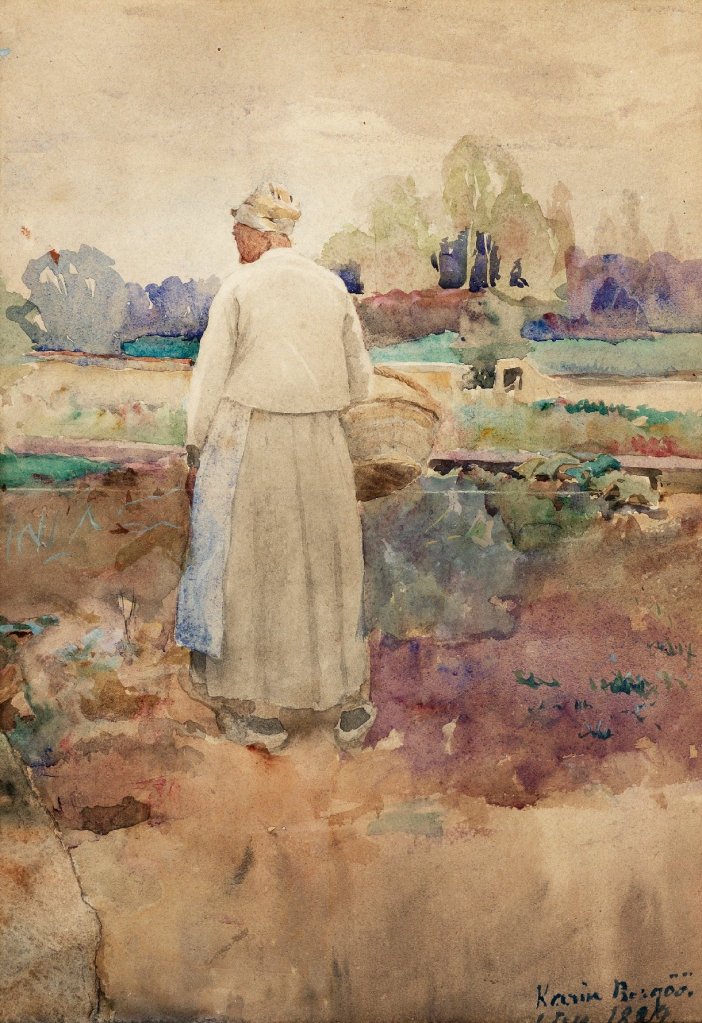
One of Karen’s best paintings at the time was a watercolour entitled Mère Morot which she completed in 1882.
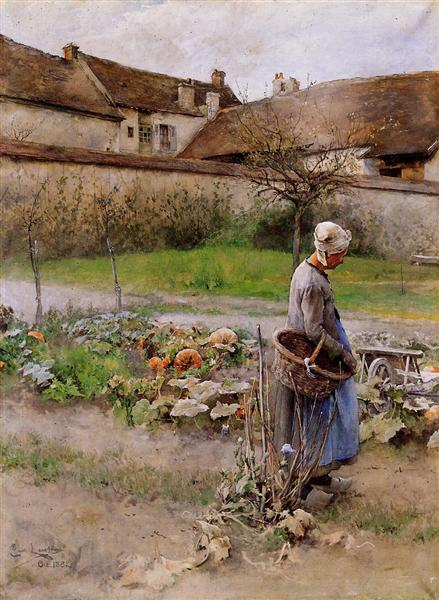
One of the works Carl Larsson produced that year whilst at the Colony was entitled The Pumpkins, some time referred to as October.
Whilst living at Gez-sur-Loing, Carl and Karin’s friendship intensified and the couple fell in love. It was noted that Carl became a much happier man and that his paintings became more colourful. Carl never held himself to be a great catch for Karin in fact on asking her father for her hand in marriage, he wrote to him saying that he was not somebody special but that given time he would prove himself to be a good husband. Karin’s father was impressed with Carl saying that he was a man in the fullest sense of the word and would be pleased to have him as his son-in-law. It is an insight into the couple’s future when Karin wrote to Carl saying that she looked forward to marrying him and giving up painting. This sounds like she had given in to possible future emancipation but it is believed that she was signalling a different artistic route she intended to take once married. She was going to concentrate on interior design and using her creative spirit. A talent which we will see in the next part of the blog, came to fruition. In the autumn of 1882 Carl and Karin married.
To end this first part of Carl and Karin’s story I wanted to go back to his autobiography entitled Jag which translates simply to “I”. He completed it two days before he died but it was never published in full until 1969 ! Why ???
After his death, Carl’s autobiography was read by his wife Karin and the book publisher and friend of the family, Karl Otto Bonnier. The words they read shocked them and they were stunned by what Carl had revealed about his life. In the book he had written quite unabashed about his pre-marital love affairs and that he had lived together and had two children with Wilhelmina Holmgren. He also recounted the tale with regards his favoured model, Gabrielle, and her beauty and the time she had screamed in rage and accused him of being a seducer when he had told her that he had found the right one (Karin). Karin and the publisher decided that the autobiography should not be made available to the public. However, in late 1931, twelve years after Carl’s death and four years after Karin’s passing the publishing house, Bonniers, decided to publish a redacted (sanitised?) version of Carl’s autobiography and it was not until 1969, fifty years after his death, that the full unabridged version was released.
In the next part of the story of Carl and Kari Larsson I will look at Carl’s later more colourful works of art and the couples life back in Sweden in their beautiful home which Karin added so much beauty to.

